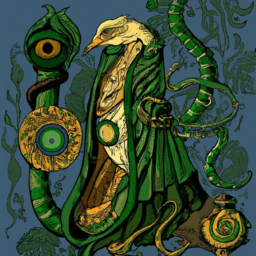Salvatore Ferragamo, a pioneer in the art of shoe craftsmanship, turned his passion for footwear into a global empire. His innovative designs and list of notable clientele solidified his status as a key figure in the history of fashion.
Recently, a documentary titled ‘Salvatore Shoemaker of Dreams’was released, chronicling the life and impact of this legendary designer. As someone who has always been fascinated by the world of fashion, I couldn’t wait to watch this documentary.
I wanted to learn more about Ferragamo’s early life, rise to fame, and how he became such an iconic figure in the industry. I also wanted to see how his innovative designs continue to inspire current designers today.
Join me as we explore Salvatore Ferragamo’s fascinating journey from humble beginnings to becoming one of the most celebrated shoe designers in history.
Key Takeaways
- ‘Salvatore Shoemaker of Dreams’ is a documentary that chronicles the life and impact of Salvatore Ferragamo, the legendary shoemaker and fashion icon.
- The documentary features interviews with family members and colleagues, and showcases glimpses into the production quality of Ferragamo’s shoes.
- Italy, particularly Florence, is home to top shoemakers and the best Italian shoe shopping experience, making it a must-visit destination for shoe lovers.
- Ferragamo’s story highlights the importance of finding a balance between work and family life, as his family often intersected with his career as a shoemaker.
Overview of the Documentary
If you’re looking for a heartwarming and inspiring documentary, you should definitely check out ‘Salvatore Shoemaker of Dreams’.
This documentary takes you on a journey through the life of an Italian shoemaker who creates stunning works of art with his bare hands.
Throughout the film, you’ll be treated to insightful interviews with Salvatore Ferragamo’s family members and colleagues, as well as glimpses into the production quality that goes into each pair of shoes.
As you watch this documentary, you’ll gain a newfound appreciation for the artistry and craftsmanship that goes into every single pair of shoes created by Ferragamo.
You’ll also be inspired by Ferragamo’s unwavering dedication to his craft and his ability to turn his dreams into reality.
With its beautiful cinematography and engaging storytelling, ‘Salvatore Shoemaker of Dreams’ is a must-watch for anyone interested in fashion or entrepreneurship.
Now let’s delve deeper into the early life of Salvatore Ferragamo.
Early Life of Salvatore Ferragamo
I’ll be discussing the early life of Salvatore Ferragamo, who was born in 1898 in a small town near Naples, Italy.
As a child, he showed an interest in shoemaking and would often watch local craftsmen work.
At the age of nine, he became an apprentice to a shoemaker in Naples where he learned the basics of the trade.
Childhood in Italy
You can almost feel the warmth of the Italian sun on your skin as I recount my childhood memories growing up in Bonito, Italy.
The small town was surrounded by rolling hills and lush greenery, with a strong sense of community and deep respect for traditional Italian customs.
Every Sunday, families would gather at church before enjoying a big family meal with pasta, bread, and wine.
Italian traditions were woven into every aspect of daily life, from the way we greeted each other to the foods we ate.
My mother would spend hours in the kitchen making homemade tomato sauce while my father crafted beautiful leather shoes by hand.
These cultural influences shaped my upbringing and inspired me to pursue a career in shoemaking.
But it wasn’t until I left Bonito for Naples that I truly began my apprenticeship and discovered my passion for creating shoes that were not only beautiful but comfortable as well.
Apprenticeship in Naples
After leaving my hometown, I headed to Naples where I began my apprenticeship in shoemaking. Under the guidance of a master craftsman, I learned traditional techniques and the intricate process of creating shoes from scratch.
From selecting the finest materials to hand-stitching each piece together, every step required precision and attention to detail. During my apprenticeship in Naples, I discovered my passion for creating shoes that combined both beauty and comfort.
Much like how Michelangelo blended art and science in his works, I aimed to create shoes that weren’t just aesthetically pleasing but also functional. By incorporating innovative designs into traditional techniques, I found a way to craft footwear that was both stylish and comfortable.
As my skills grew, so did my reputation as a skilled shoemaker – leading me on the path towards fame and success.
Rise to Fame
Once you start watching Salvatore Shoemaker of Dreams, you’ll be captivated by the extraordinary journey of his rise to fame.
Salvatore Ferragamo’s career highlights are shown as he creates shoes for famous actresses like Marilyn Monroe and Audrey Hepburn. The documentary also depicts his personal struggles, including his immigration to America and his financial difficulties during the Great Depression.
Despite these challenges, Ferragamo persisted in pursuing his passion for shoemaking and eventually established himself as one of the most innovative designers in the industry. His unique designs incorporated new materials such as cork and raffia while maintaining a focus on comfort and functionality.
As I watched his story unfold, I couldn’t help but be inspired by his determination to succeed against all odds.
Innovative Designs
As I delved further into the documentary, I was struck by Salvatore Ferragamo’s innovative designs. He wasn’t content with simply creating beautiful shoes; he wanted to push the boundaries of what was possible in shoemaking.
Ferragamo experimented with sustainable materials like cork and raffia, long before it became fashionable to do so. His futuristic styles were inspired by everything from architecture to machinery, resulting in unique shoe designs that stood out from the crowd.
To keep audiences interested and engaged, two sub-lists come to mind:
-
Materials:
-
Cork
-
Raffia
-
Leather alternatives
-
Techniques:
-
Hand-stitching
-
Molded soles
Ferragamo’s use of these materials and techniques set him apart from other shoemakers of his time. Not only did he create visually stunning shoes, but they were also comfortable and durable.
It’s no wonder that his clients included some of Hollywood’s biggest stars. Speaking of Hollywood stars…
Celebrity Clients
You may be surprised to learn that some of the biggest names in Hollywood were once clients of Salvatore Ferragamo, including Marilyn Monroe and Audrey Hepburn. Ferragamo’s famous collaborations with these celebrities helped to cement his status as a top shoemaker in the industry. These collaborations also provided personal anecdotes for Ferragamo, who was known to work closely with his clients to ensure their shoes fit perfectly.
One such anecdote involves Marilyn Monroe, whose feet were notoriously difficult to fit. Ferragamo created a custom pair of heels for her that not only fit like a glove but also helped her maintain her posture while filming.
The collaboration between Ferragamo and Hollywood icons like Monroe and Hepburn showcases the level of expertise and attention to detail that went into each pair of shoes he crafted. It’s no wonder that even today, decades after his death, Salvatore Ferragamo remains one of the most influential shoe designers in history.
With such an impressive list of clientele under his belt, it’s no surprise that returning to Italy was always on Ferragamo’s mind. He had already established himself as a premier shoemaker in America, but he longed to return home and continue crafting beautiful shoes in Italy.
Return to Italy
As much as I enjoyed working with celebrity clients, there came a time when I felt the need to return to my roots in Italy. The country has always been an integral part of my life and work, and I wanted to immerse myself in its culture once again.
Italy is a place where art, fashion, and architecture blend seamlessly. It’s also known for its exquisite cuisine and wine. For those who are planning a trip to Italy, I recommend visiting Florence, where some of the world’s top shoemakers reside. Take a stroll down Via del Parione or Via de’ Tornabuoni to experience the best Italian shoe shopping experience. These streets are filled with boutiques that offer handmade leather shoes that are sure to make heads turn.
Aside from shoe shopping, travelers can visit places like Rome or Venice for their historical significance and picturesque views. There’s no shortage of museums, galleries, and churches that showcase Italy’s rich history and culture. Additionally, tourists can witness traditional festivals like Carnival in Venice or Palio di Siena in Tuscany.
Now that we’ve covered some travel recommendations for Italy, let’s move on to discussing how family life plays a role in my profession as the ‘Salvatore Shoemaker of Dreams’.
Family Life
Get ready to dive into the world of family life and how it intersects with my career as a shoemaker. As a parent, I’m constantly trying to find the perfect balance between work and home life. It can be challenging at times, but I’ve found that having a clear understanding of my parenting style has helped me navigate these waters.
Here are some aspects of my family life that intersect with my career:
-
My children often visit me at work and enjoy helping out in the shop
-
I make sure to prioritize spending quality time with them outside of work hours
-
My partner is also an entrepreneur, so we understand each other’s busy schedules
-
We try to involve our children in decision-making processes when it comes to our businesses
Finding the right balance between work and family life can be a delicate dance, but it’s important for both aspects of your life to thrive.
As a shoemaker, I strive to create durable and beautiful shoes that’ll stand the test of time. In the next section, we’ll explore how this dedication has impacted the fashion industry as a whole.
Impact on the Fashion Industry
Diving into the impact of shoemaking on the fashion industry, it’s clear that durability and quality are highly valued traits in footwear. However, in recent years, sustainability and social responsibility have also become increasingly important factors to consider.
Salvatore Shoemaker of Dreams understands this shift in consumer values and has made a conscious effort to incorporate eco-friendly materials and ethical production practices into their shoemaking process. By using sustainable materials like recycled rubber and organic cotton, Salvatore Shoemaker of Dreams is able to reduce their carbon footprint while still producing high-quality shoes. Additionally, they prioritize fair labor practices by working with skilled artisans who are treated fairly and paid living wages.
As consumers become more aware of the environmental impact of fast fashion and the importance of supporting ethically-run businesses, brands like Salvatore Shoemaker of Dreams have a competitive advantage in the market. With sustainability and social responsibility at the forefront of their brand values, Salvatore Shoemaker of Dreams sets an example for other companies in the fashion industry.
However, their commitment to these ideals extends beyond just making shoes – as seen in their upcoming film production which focuses on raising awareness about mental health issues within the fashion industry.
Film Production
You’re in for a treat – the upcoming film production by Salvatore Shoemaker of Dreams is set to shine a light on mental health issues within the fashion industry, bringing important conversations to the forefront.
As someone who’s always been passionate about both filmmaking and fashion, I’ve been eagerly following their progress. The team behind the project has made it clear that they’re committed to creating an impactful and thought-provoking film that won’t just entertain but also educate audiences.
One aspect of this production that particularly interests me is its unique approach to film financing and distribution strategies. Rather than relying solely on traditional methods, such as seeking out investors or securing a deal with a major studio, Salvatore Shoemaker of Dreams has opted to take a more independent route.
They’ve turned to crowdfunding platforms, social media marketing, and other digital tools to build buzz around their project and raise funds. This innovative approach reflects both the changing landscape of the entertainment industry and the team’s desire for creative control over their vision.
I can’t wait to see how this bold strategy pays off when the film’s released later this year!
Frequently Asked Questions
What is Salvatore Ferragamo’s net worth?
Salvatore Ferragamo’s net worth is estimated to be around $2.1 billion. He was a pioneer in the Italian fashion industry, known for his innovative designs and high-quality craftsmanship. His impact on fashion continues to be felt today.
Did Salvatore Ferragamo have any siblings?
As far as I know, Salvatore Ferragamo had six siblings. Growing up in a poor family in Italy, he began making shoes at age nine and eventually moved to America where he gained recognition for his early shoe designs.
What was Salvatore Ferragamo’s favorite shoe design?
Salvatore Ferragamo’s favorite shoe design is not documented, but he is known for his shoe innovations and iconic designs for famous clients like Marilyn Monroe. His legacy lives on through the brand’s continued success.
How many children did Salvatore Ferragamo have?
After researching, I can confirm that Salvatore Ferragamo had six children. The Ferragamo family legacy continues with his descendants running the renowned fashion brand.
What brand did Salvatore Ferragamo admire most in the fashion industry?
Salvatore Ferragamo admired Chanel as the top fashion influencer and collaborated with Hollywood stars like Audrey Hepburn. His focus on comfort and quality led to iconic designs still popular today.
Conclusion
Overall, watching ‘Salvatore Shoemaker of Dreams’ was a fascinating experience. Learning about Salvatore Ferragamo’s early life and rise to fame was inspiring and gave me a newfound appreciation for the brand.
It was interesting to see how his innovative designs and attention to detail set him apart from other shoemakers of his time. One thing that stood out to me was the list of celebrity clients who wore his shoes, including Marilyn Monroe and Audrey Hepburn. It’s amazing to think that these iconic women walked in shoes designed by Salvatore himself.
His return to Italy and dedication to creating jobs for locals also showed his commitment to giving back to his community. As someone who loves fashion, this documentary gave me insight into the impact Salvatore Ferragamo had on the industry as a whole.
I can’t help but admire his creativity and determination in pursuing his dreams. Watching this film reminded me that with hard work and perseverance, anything is possible – even becoming a legendary shoemaker like Salvatore Ferragamo.










